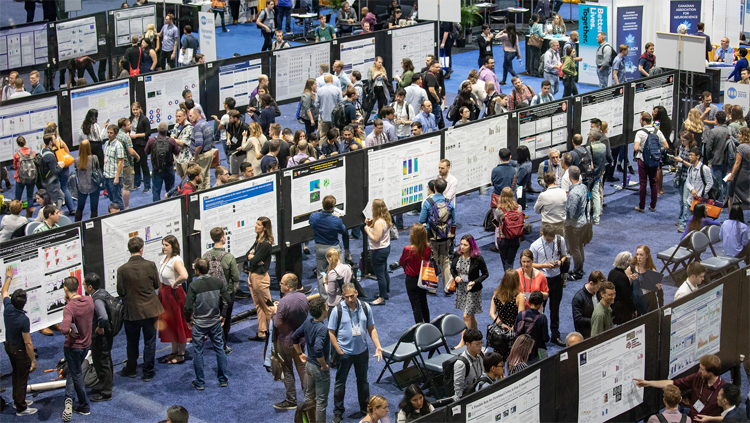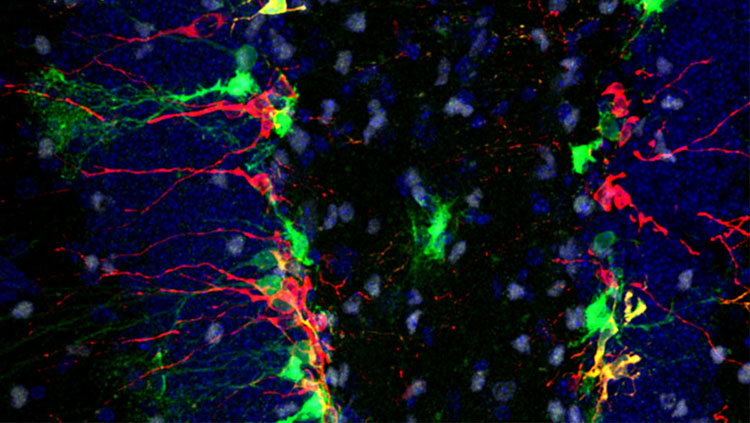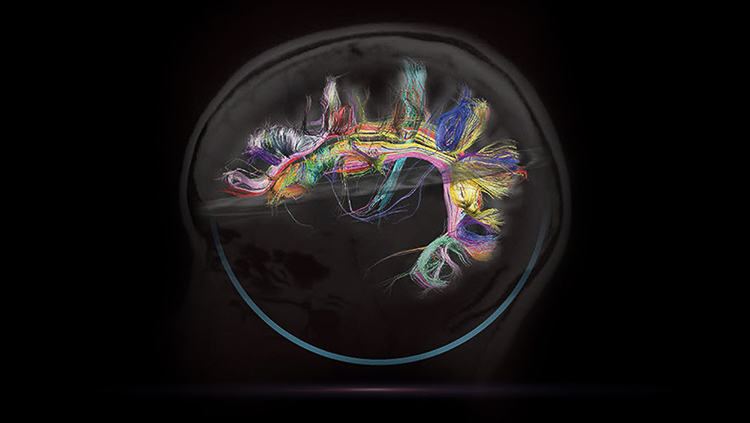Chapter VII: The Annual Meeting, The "Hub" of SfN, Enters the Digital Age
Meeting attendance continued to explode as the organization grew, increasing another 51% in the ten years from 1995 to 2005, to an all-time high of 34,815, then levelling off to a fairly steady 28,000 to 32,000 over the following decade.
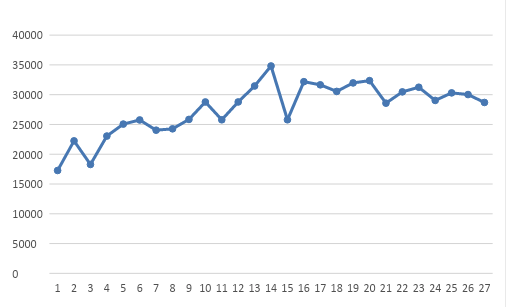
SfN leadership and staff worked hard to meet the challenges of retaining dynamism and relevance, as well as unity and diversity, within the annual neuroscience “melting pot,” creating a new division of Meeting Services, developing format and scheduling innovations, utilizing digital technology to make the program and meeting experience more manageable, promoting speaker diversity, offering assistance to members with special needs, such as parents and international attendees, adding new content for trainee members and for the general public, and updating data and technology to ensure smooth operations. Ultimately, however, it was the members who kept the meeting fresh and exciting, particularly on the poster floor. As Gordon Shepherd commented, “[T]he posters are where you meet the people who are actually doing the work and where you reach across this divide between senior and junior and male and female and academic and commercial and U.S. versus other countries and to me that’s just such an exciting and invigorating part of doing science on this personal basis, where you can really get a sense of actually creating something new from your personal interactions.”278
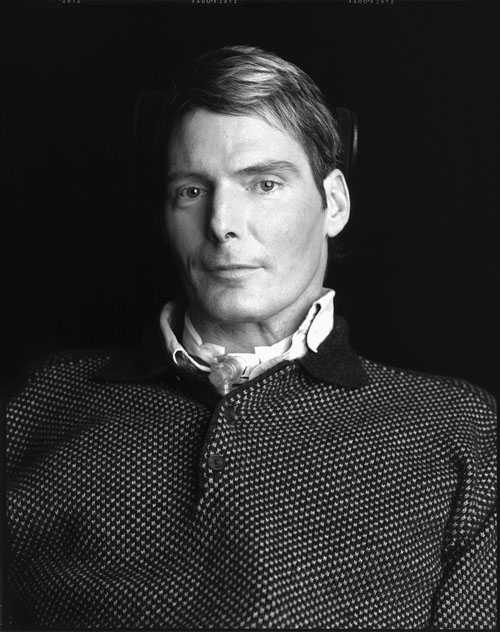
SfN leaders also recognized that nonscientists could also offer information and insights that could help to spread the word about brain research and inform members’ work. Dennis Choi, as SfN President (1999– 2000), made the choice to invite actor and spinal cord injury victim Christopher Reeve to appear at a Presidential Symposium on “Restoring Function after Spinal Cord Injury” at the Annual Meeting in 2000.279 As Choi enthusiastically reminisced, "Reeve was such a spectacularly articulate person with really, wisdom and appreciation for the breadth of neuroscience and the importance of basic neuroscience…he knew right away that curing spinal cord injury was unlikely to come from a single spinal cord injury experiment, but would have to draw on a very large corpus of basic research, and he advocated for the latter…I thought, what a wonderful spokesperson for what we neuroscientists do––what the SfN does….I recall his speech as really quite profound. It was in the evening; he was on stage, spotlight, and it was silent. And then there were these respirator breaths because he had a very high cervical injury, unfortunately, and he couldn’t speak without great difficulty and without drawing on his respirator for air. And he would speak in this respirator-punctuated voice, but it was so steady, so articulate, and everybody was listening and it was really a very important moment, I thought, certainly for me."280

The Annual Meeting in San Diego opened the next year with record attendance in the wake of the September 11 attacks; as President Fred Gage noted, “For the neuroscience community, there has never been a more important time for us to work diligently and effectively and to take solace in the fact that, as scientists, we make a difference every day.” At the same time, he acknowledged concerns that the meeting was becoming “too large and unmanageable”. In response, the Program Committee had developed subcategories within its thematic organization and planned opportunities for “meetings within the meeting” to assist people to meet and interact with others in their areas of special interest.281 The “meetings within the meeting” debuted at the 2004 Meeting with 27 mini-symposia, covering all 9 of the program themes.282
As Eve Marder (President 2007–2008) described the results of these innovations, “[I]t’s almost like you have 15 or 20 small meetings running in parallel. So people can bounce back and forth in between the small meetings at the poster sessions of the people in their peer group that they want to meet and find, and they do find each other…and then bounce to a big talk with three or four or five thousand people and get an overview of a whole field. I think SfN has done particularly well at creating the intimacy of a small meeting, housed in this enormous meeting.”283
The summer of 2002 saw the creation of a new Meeting Services division as part of the central office reorganization,284 and the development of the Strategic Planning Initiative, which included an Annual Meeting Initiatives working group, chaired by Richard Huganir, that was specifically charged with finding ways to make the meeting more “user-friendly.” Some of the suggested changes, already underway or soon to be adapted, were:
- Increasing the number of cross-disciplinary lectures.
- Increasing the amount and quality of Web-based information to help with meeting navigation and program review.
- Providing orientation sessions for first-time attendees.
- Enhancing shuttle bus service to and from accommodations.
- Improving signage, color-coding, and other navigational aids.
- Tasking the Program Committee with continuing to monitor and refine the sections, specializations, and topics used to organize and session the meeting.285
The Program was already undergoing major transformation from the original “telephone books” of abstracts. Electronic abstract searching had been introduced in 1989.
Soon after, Moses Chao and Robert Malenka (Program Committee chairs 2002–2003) took the first step in improving schedule access when they and the Program Committee enthusiastically accepted a staff suggestion to develop daily schedule books including “a little, thin pamphlet that had all the talks and all the schedules” for the day.286 Meanwhile, Program Committee members Harvey Karten and Mickey Goldberg, who also chaired an Ad-Hoc Committee on Electronic Initiatives, had proposed that the Society begin accepting electronic abstracts and distributing them on CDs. Members had the option to submit a paper or electronic abstract for the first time in 1999. Approximately half chose electronic submission, and, as Goldberg had feared, the system crashed when the majority of these arrived in the last half-hour of the final day. After two more years of dual submissions in 2000 and 2001, “electronic submission became the norm” in 2002,”287 and the CD of abstracts, with a built-in itinerary planner, replaced the “telephone books.”288
SfN’s Program Committee also introduced multiple new types of sessions and formats: for example, around 2000, the first “data blitz” talks, in which members were given one slide and one minute to explain their findings; and in 2009, the first nanosymposia, slide sessions based on “abstracts from multiple labs with a common topical interest”, allowed members to organize their own presentations.289
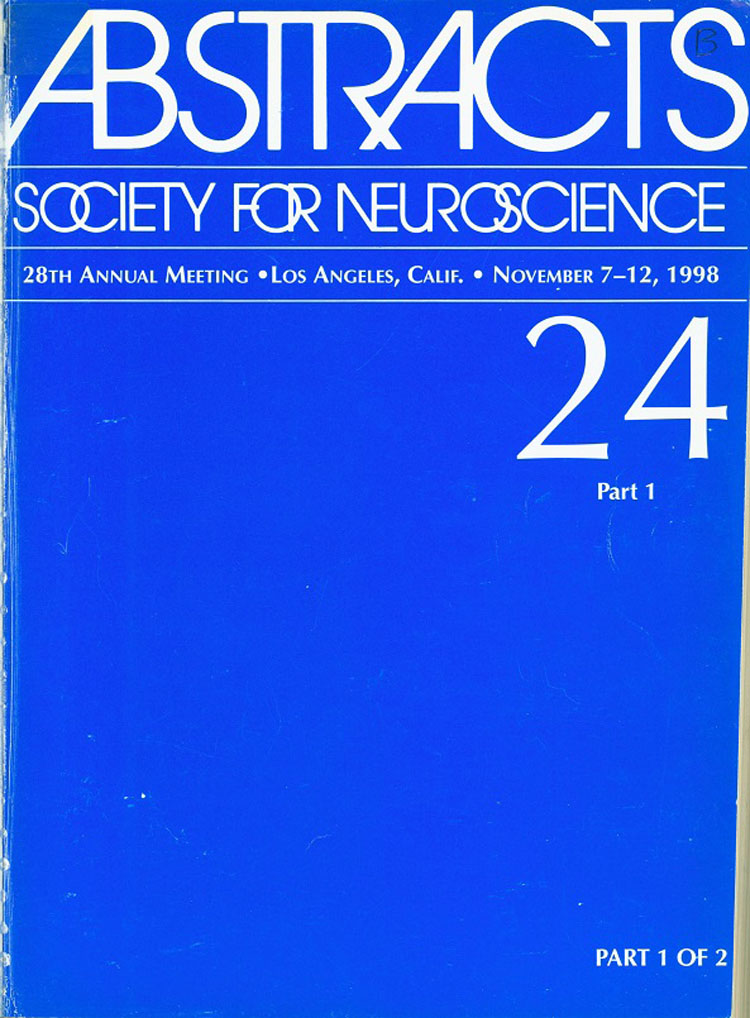

In 2014–15, after many years of slotting abstracts into the same areas, the Program Committee re-evaluated the themes and topics and reorganized the way that presentations were organized. The Committee, under the chairmanship of Liqun Luo, undertook this major change “to ensure that the breadth of the field is covered and that no one theme or topic area is over- or under-represented in the scientific program.”290 The Committee sought to distribute abstracts among topic areas more evenly, including both basic and disease-related research, and to “foster interactions of scientists working on related areas…by placing their topics in the same themes.”291 In the new structure, for example, “scientists who study basic developmental neurobiology and neurodevelopmental disorders…have their abstracts under the same theme, ‘Development,’ while a new theme, ‘Motivation and Emotion,’… integrate[s] research on mechanisms of motivational behavior with work on mechanisms of drug addiction.”292 As Luo explained, "[N]euroscience is really a multi-dimensional structure, that you have different sub-disciplines that interact with each other in a very rich network, but themes and topics, you arrange them in a linear sequence. By increasing the proximity of certain disciplines, you also distance others, right? So you want to make the optimum way of using a linear sequence to organize a multi-dimensional, highly complicated network, and you gain some, you lose some…So it was actually a very challenging task."293
He was pleased when 80% of the Committee endorsed the final plan and when members later commented to him, “Oh, for the first time I feel what I do actually fits the sequence!”294
Members responded positively to all the various innovations, as shown by a survey in 2012, which reported that most attendees were “satisfied” or “extremely satisfied” with the Annual Meeting. Respondents also expressed interest in additional features, which were already in the works. Dynamic multimedia posters were introduced in 2012. More professional development and networking opportunities became available when the first Graduate School Fair was held that same year,295 followed in later years with offerings such as coaching on mentor-mentee interactions and panels on effective scientific communication. Meeting navigation tools took shape in a webinar presenting tools “to make the most out of the Annual Meeting” in 2014.296 Perhaps most importantly, all schedules and other meeting information became available to members in a cell-phonebased app in 2013, completing the digital transformation. Christophe Bernard, who was serving on the Program Committee at the time, remembered that “I insisted a lot to have the app and some people were dubious about the utility of the app. Well, now you can’t do anything without the app.”297 In 2018, meeting attendees downloaded the app 26,000 times.298 As Nick Spitzer and Huda Akil commented, “one learns the tools of navigation for meetings of this size and the society has been very good” in providing digital aids; “everybody else is having a hard time navigating the immensity of it all, so you feel we’re all in this together and I think that’s actually extremely reassuring and exciting at the same time.”299
Some major changes in this period involved “difficult and thoughtful” discussions, as when Council decided in fall 2012 to rotate future meetings between three cities with adequate convention and hotel space – Chicago, San Diego and Washington – and to exclude New Orleans because of the “unacceptably high risk” of hurricanes in the autumn months. Members had coped with tropical storms in Miami in 1994 and 1999 and a Level-1 hurricane in New Orleans in 2012 – Marina Picciotto recalled having to “wade down the center of the street in my jeans in water that was definitely above my knees at some point”300 – but Council had to consider the risk of financial loss in the event of serious hotel or convention center damage, though the decision was not unanimous.301
The Annual Meeting of the 2010s remained “an incredibly exciting venue”, a place “to hear a world class scientist on something outside of your area”, or to “get one good idea [that] can lead to a whole year’s work of research or a whole new way of looking at things.”302 Despite the meeting’s success, SfN leadership and staff have never stopped looking for ways to enhance and expand member experiences, to maintain the unity and diversity of neuroscience, and to create “an annual meeting environment in which it is possible for everyone in the scientific community to thrive.” In spring 2018, for example, Council discussed the financial burdens faced by young attendees beyond just travel and housing, including, for example, the cost of drinks at important networking events, and agreed to spend $50,000 to make such refreshments affordable.303 In the fall, Council approved the continuance of the new Storytelling Session, in which members shared personal narratives about their scientific experiences. SfN also contacted the three convention centers to stress the need for appropriate facilities for scientists attending with infants and received encouraging responses.304
Participation at the 2018 meeting in San Diego showcased the fruits of SfN’s ongoing efforts to keep the Annual Meeting fresh, dynamic, inclusive, and user-friendly.
Related
Endnotes
- Interview with Gordon Shepherd, November 3, 2018.
- “Christopher Reeve Among Annual Meeting Speakers” NN 31 (July/August 2000): 1
- Interview with Dennis Choi, November 5, 2018.
- “Neuroscience: Making a Difference Every Day,” Neuroscience Newsletter January-February 2002: 1, 12.
- "Neuroscience 2004 Promises Exciting Science and Improved Services; Minisymposia Are Added.” Neuroscience Quarterly Fall 2004: 12.
- Interview with Eve Marder, November 3, 2018.
- "Society for Neuroscience Reorganizes Structure of Central Office,” NN 33 (4) July/August 2002: 8.
- Working Groups will Implement Goals of Strategic Plan,” Neuroscience Quarterly Winter 2003: 12.
- Interview with Robert Malenka, November 6, 2018.
- Interview with Michael Goldberg, November 6, 2018; “Michael E. Goldberg,” in Thomas D. Albright and Larry R. Squire, History of Neuroscience in Autobiography, vol. 10, 2018: 304–351.
- Abstracts Volume goes Electronic Only” NN 33 (January/February 2002): 2
- "New in 2009: Nanosymposia, Networking, Public Outreach,” Neuroscience Quarterly Summer 2009: 12.
- “SfN Adjusts Themes and Topics for Future Annual Meetings,” NQ Fall 2015
- “SfN Adjusts Themes and Topics”
- “SfN Adjusts Themes and Topics”
- Interview with Liqun Luo, November 6, 2018.
- Interview with Liqun Luo, November 6, 2018.
- “Annual Meeting Survey Uncovers New Opportunities,” Neuroscience Quarterly Fall 2012: 3.
- "Annual Meeting Preview: Optimize Your Time at Neuroscience 2014,” Neuroscience Quarterly Fall 2014: 1, 10–11.
- Interview with Christophe Bernard, November 6, 2018.
- Interview with Paula Kara, January 10, 2019.
- Interview with Nick Spitzer, November 5, 2018; Interview with Huda Akil, November 7, 2018.
- Interview with Marina Picciotto, November 4, 2018.
- “Fall Council Roundup,” Neuroscience Quarterly Winter 2013: 3.
- Interview with Lisa Monteggia, November 6, 2018; Interview with Larry Swanson, December 13, 2018.
- Spring Council Roundup,” Neuroscience Quarterly Summer 2018.
- Fall Council Roundup,” and “Changes to SfN Ethics Policy and Code of Conduct Aim to Support Scientific Dialogue and Foster Welcoming
Community,” Neuroscience Quarterly Winter 2019.






